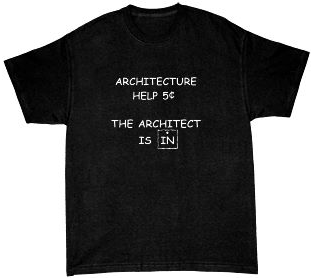I was able to catch an earlier flight home last night (which was itself delayed, but still got me home an hour and a half earlier than expected). Combined with the work that piled up while I was gone and I haven’t gotten around to the rest of my thoughts on Mashup Camp. Until now…
- This should have been in the day one update, but we had a great presentation Monday night on the History of Computer Marketing. Very interesting and very entertaining.
- It was good to see Marc Canter.
- There were fewer sessions on Tuesday because a significant amount of time was taken up on “speed geeking”. Supposedly similar to speed dating, but with mashup demos instead of dates. In actuality, it was more like demo anarchy with loud annoying buzzing.
- I spent a significant time with the folks from Bungee Labs (no relation to the makers of Halo). Like Ning, they are a web / mashup development site. However, where Ning appears to be going after the hobbyist, Bungee Labs is going after the enterprise. They had a cool demo of a SalesForce.com & Exchange mashup with maps.
- I was very impressed with WeatherBonk. In particular, the way they overlay the map with radar and fog information. They also make SkiBonk.
- I sat in on the Microformats Specification Work session, but didn’t get much out of it as it was a face-to-face meeting of core microformats folks rather than the “What are Microformats” session that I didn’t make the first day (conflict with Mashup Business Model session)
- There was a session on Firefox futures, but it was lame. You can get more from just reading the Firefox 2 product planning wiki page. Interestingly enough, if you look at their list of features for Firefox 2, only one is of any use to the web developer: In-line Spell Check. Everything else improves the chrome. Their priority one features are: new bookmark and history system, tabbed browsing UI improvements, extension manager enhancements, search engine UI improvements, and an update to the browser appearance. As I wrote in Browser as VM, we’ve reached an inertia point where it’s hard for a browser vendor to add new proprietary capabilities that only work on their browser. Same goes for Microsoft – read the IE7 Technology Overview and while there is great work on things like security and the RSS platform, there are no new web developer feature, just bug fixes, better standards support and a native XmlHttpRequest object. I wonder what it’s going to take to get new capabilities added to arguably the most important virtual machine platform in the world.
- Podbop won the mashup contest. Chicago Crime came in second. Frankly, I was much more impressed with Chicago Crime.
- As the winner of the mashup contest, the guy that wrote Podbop got a Sun server. Second prize was a new intel-based Mac. And ten third place finishers got copies of Visual Studio Pro. Given that none of the mashup content entrants were built on Microsoft technology, I’d be interested to know how excited the third place finishers were about getting a copy of VS.
- I met a lot of great people at Mashup Camp (which is the primary reason I went) but above all I really got a lot out of hanging out with the MS folks who were there. We’re such a big company that it’s hard to keep abreast of what’s going on, so this kind of face-to-face time is invaluable.
That’s it, at least until Mashup Camp 2.
